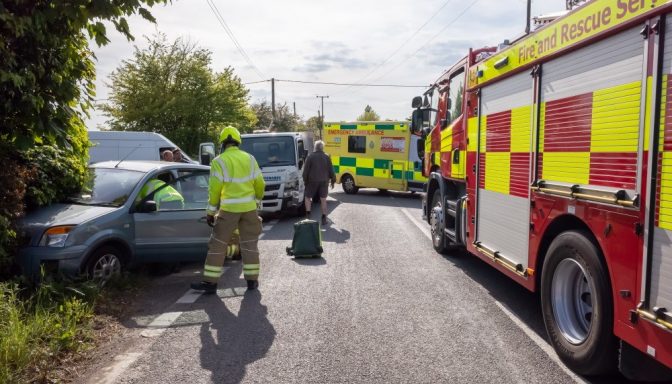The organisations have written to the Secretary of State for Transport, Anne-Marie Trevelyan MP, to emphasise the vital contribution of walking and cycling to the UK urban and rural economic growth and to society.
This comes after a report released by Sustrans, the UK’s largest walking and cycling charity, highlights that walking, wheeling and cycling generated £36.5 billion to individuals and the UK economy in 2021.
This is based on the direct economic benefits of walking and cycling as well as others such as reducing the cost of traffic congestion and running a car, improved health and reduced burden on the NHS, and fewer sick days at work.
The letter, signed by Brake alongside members of the Walking and Cycling Alliance; the AA motoring organisation; CPRE, the countryside charity; the Road Safety Foundation; the Urban Transport Group; and the Federation of Small Businesses (FSB), calls for protection of the cycling and walking budget, already committed in the second Cycling and Walking Investment Strategy 2022, to foster aspirations for growth and to support people living through the cost of living crisis.
Mary Williams OBE, chief executive of Brake, said: "Walking, wheeling, and cycling have many positive effects on a global, local, and individual level; they're better for the environment, good for our health, make our roads safer by reducing the number of cars, and are much more economical. We must change our "just jump in the car" culture to make active modes of transport the norm. This investment is crucial to create new pathways, making active travel safe, easy, and accessible for all."
Xavier Brice, CEO of Sustrans, said: “It’s clear that active forms of travel, such as walking and cycling, bring in billions of pounds of economic benefit. Plus, as people are hit by the cost of living crisis, affordable ways of getting around are critical. People must have the opportunity to make the active travel choice instead of expensive car use, to boost people’s spending power for the benefit of the economy and our hopes of growth.”
Sustrans’ Walking and Cycling Index, showed that in 2021 walking, wheeling and cycling created £6.5billion in economic benefit across the 17 urban areas surveyed. Extrapolated UK-wide, this equates to an overall annual benefit of £36.5billion.
More
People who walk to the high street spend up to 40% more than those who drive, whilst physically active people take 27% fewer sick days each year than their colleagues.
Cycling and walking infrastructure unlocks housing developments giving people more choice in how they travel and connecting them to work and education.
Edmund King OBE, AA president: “Every driver is a pedestrian and most cyclists are drivers, therefore it is in everyone’s interest to level up walking and cycling infrastructure. By creating new routes, as well as investing in existing paths and footways, we can create a safer, greener transport network that benefits all road users.
“Maintaining the £4 billion budget for these projects will also help drivers save money on fuel or electricity. When we ask AA members what mobility modes they would consider to replace one or more car journeys per week, the top answer was bicycle (47%), followed by e-bikes (41%).”
National Chair of the Federation of Small Businesses (FSB), Martin McTague, said: "To make the country healthier, reduce the reliance on energy and fuel and move towards Net Zero, new Ministers must look across the board at active travel. This should include infrastructure improvements and reforming schemes like Cycle To Work, so they operate as well for small employers and the self-employed as they do for larger firms.”
Sarah Mitchell, CEO of Cycling UK said: “As cost of living hits us hard, everyone is looking to save money wherever they can. Many are turning to cycling for those shorter journeys - whether to work, school or the shops – that are essential for the UK’s growth agenda. It is essential that funding for cycling and walking is, at the very least, maintained at the current level of investment if we are to keep the nation moving and deliver the government's own active travel strategy.”
At the height of pandemic in 2020, the National Cycle Network alone carried 4.9 million users over 764.8 million trips, showing massive public reliance on walking and cycling infrastructure. This also plays a vital role in supporting the Government’s aim of 50% of all journeys in towns and cities walked or cycled by 2030, on the path to achieving Net Zero.
The call comes as the cost of living crisis is exposing people on low incomes to transport poverty; a cause of social isolation, financial debt, and an increasing gap in economic sectors of society.
Xavier Brice added: “It is high time we to stopped pitting motoring against walking, wheeling and cycling and instead realise the benefits that long-term Government investment for active travel can have for economic growth and to support people on low incomes through the cost of living crisis.”


